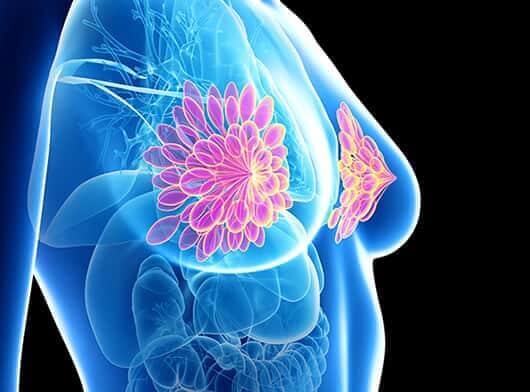- Imaging
- Laboratory
- Mammogram
- Mammography is a modality to image the breast using low-dose X-rays. It can help detect abnormalities within the breast tissue such as lumps, micro-calcifications etc. Mammography is a modality to image the breast using low-dose X-rays. It can help detect abnormalities within the breast tissue, such as lumps, micro-calcifications etc, including those abnormalities that are not palpable by one's own hand. Hence, helps detect breast cancer at an early stage. Mammograms can be used as a screening as well as a diagnostic tool.
During a mammogram, the individual's breast is compressed between two flat plates on the mammography machine. This helps to spread out breast tissue to enable the x-rays to capture a clearer image of the breast anatomy and also helps reduce the amount of x-rays required to image the breast. - 3D Full Field Digital Mammogram & Tomosynthesis
- This is an advanced technology in mammography, also called 3D mammography. It captures multiple images of the breast tissue by an X-ray tube that moves in an arc, which is reconstructed to form a 3D image of the breast for better visualization and clarity.
These two modalities may be supplemented by ultrasonography of the breast to better delineate a breast lesion.
Another latest development in mammography technology is Contrast-enhanced mammography (CEM), wherein a special dye is injected intravenous, and a mammogram is taken in the usual manner, which shows areas of increased blood supply to the breast, hence helping in better delineation of a suspicious breast lesion. - Contrast Mammogram
- A special Dye is injected through the veins, and mammogram is taken, which helps in diagnosing breast cancer and to look for the number of lesions in single or both breasts.
- MR Mammogram using specialized and dedicated Breast MRI coil
- Magnetic resonance imaging(MRI) uses the interaction of radio waves and magnetic field, which will be processed in a high-speed computer system to produce detailed scan pictures of both breasts in diagnosing the breast lesion and to look for its extent. It also helps us to rule out any similar lesion in the contralateral breast.
- Biopsy
- Ultrasound guided breast biopsy is done to confirm whether the tumor is benign or malignant to further characterize it.
For lesions that are not visible on the ultrasound and not palpable, a Stereotactic breast biopsy under Tomosynthesis guidance is done.
Wire localization using ultrasound/ tomosynthesis/ mammogram is done for clinically non-palpable lesions that help aid in tumor removal.
- Blood Test - Tumor markers such as Cancer antigen 15-3 (CA 15-3), cancer antigen 27.29 (CA 27.29), and carcinoembryonic antigen (CEA) help monitor breast cancer and metastatic breast disease.
- Pathology- The biopsy sample collected is sent for further pathology evaluations such as Histopathological evaluation (HPE), cytology and immunohistochemistry (IHC) to help identify the type of tumor, its staging and grading.
- IHC
- Immunohistochemistry is a must for prognostication in the case of breast cancer – Our panel includes. Hormone receptor study – ER, PR, HER 2 NEU, Ki-67.
- In case of triple negative breast cancer studies for androgen receptor and CK5/6 may be done.
- Organ-specific markers to identify metastasis of breast origin – GATA-3, mammaglobin, GCDFP-15.
- PD-L1 using SP142 clone for immunotherapy.



.png)
